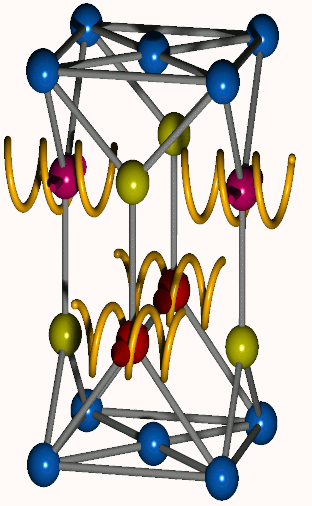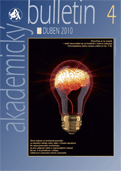New Concept for Digital Data Storage

14 Jan 2016
International research team demonstrates electrical switching of an antiferromagnet
Ferromagnets and antiferromagnets are the two common forms of magnetically ordered materials. Traditionally we thought that magnetism can be easily controlled and utilized only in ferromagnets. Researchers from the Czech Republic, United Kingdom, and Germany change this perception by demonstrating electrical switching of magnetization in an antiferromagnetic microchip. The work was published online by the journal Science on 14 January 2016 (DOI: 10.1126/science.aab1031).
New possibilities of imaging molecules with atomic force microscope

6 Aug 2015
Scientists from the Institute of Physics of the Czech Academy of Sciences (CAS) together with colleagues from Osaka University in Japan presented in the journal Nature Communications [1] a new method that significantly advances the current possibility for atomic force microscopes to image chemical structures of individual molecules. Recent developments in scanning microscopy enable us to resolve the chemical structure of individual molecules deposited on surfaces. The sub-molecular resolution of individual molecules opens up entirely new possibilities in the study of physical and chemical properties of molecular nanostructures. However, it was possible to carry out these measurements only at very low temperatures close to absolute zero with specially modified microscope tips.
New ERC project in the Institute of Physics of the Academy of Sciences

22 Sep 2014
Joerg Wunderlich from the Department of Spintronics and Nanoelectronics of the Institute of Physics CAS, with his colleagues from the UK and Germany, was awarded the prestigious ERC Synergy Grant for the project “Spin-charge conversion and spin caloritronics at hybrid organic-inorganic interfaces”. The project has started in August 2014 and will run till July 2020. Besides the Institute of Physics, the other participating organizations are the University of Cambridge, Hitachi Cambridge Laboratory, Imperial College in London, and the Johannes Gutenberg University in Mainz.
Connecting the worlds of semiconductors and magnets

20 Aug 2014
Researchers from the Institute of Physics CAS realize an efficient spin-charge converter
Current information technologies are either charge-based or spin-based. Semiconductor microprocessors are prime examples among the large variety of charge-based devices. They utilize the possibility offered by semiconductors to easily electrically manipulate and detect their electronic charge states representing the zeros and ones. Spin-based devices operate on an entirely distinct principle.
Institute of Rock Mechanics and Structure ASCR has become a Worldwide Centre of Excellence

14 Jul 2014
The scientific teams of the Academy of Sciences of the CR and Charles University have received significant awards for their results so far in long-term joint research of landslides. The Institute of Rock Mechanics and Structure (ÚSMH) of the CAS, v. v. i, along with the Faculty of Science of CU obtained the title of a Worldwide Centre of Excellence for Research of the Risks of Landslides in Beijing in June of this year.
The FUNBIO project – studying materials on the boundary of life

7 May 2014
Physics helps economy: a new monograph on Econophysics from the Institute of Physics, CAS

12 Mar 2014
Importance and impact of methods and techniques developed for studying physical problems has outreached the realm of natural sciences. Methods of quantum physics and statistical mechanics find more and more applications in biology, economy, informatics, or sociology. Physics has become one of the most important components of a number of new interdisciplinary research fields. Econophysics utilises methods of statistical mechanics and theory of phase transitions to model and understand processes in economy and financial markets.
Relativity shakes a magnet

4 Mar 2014
Researchers from Institute of Physics CAS demonstrate a new principle for magnetic recording
Current technologies for writing, storing, and reading information are either charge-based or spin-based. Semiconductor flash or random access memories are prime examples among the large variety of charge-based devices. They utilize the possibility offered by semiconductors to easily electrically manipulate and detect their electronic charge states representing the “zeros” and “ones”. The downside is that weak perturbations such as impurities, temperature change, or radiation can lead to uncontrolled charge redistributions and, as a consequence, to data loss.
Magnetic inside but not on outside

3 Feb 2014
A new theory explaining the origin of hydrocarbon molecules in interstellar space

22 Jan 2014







